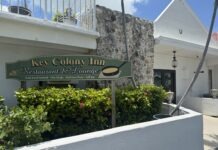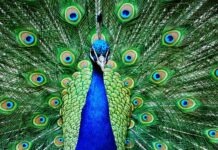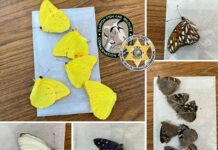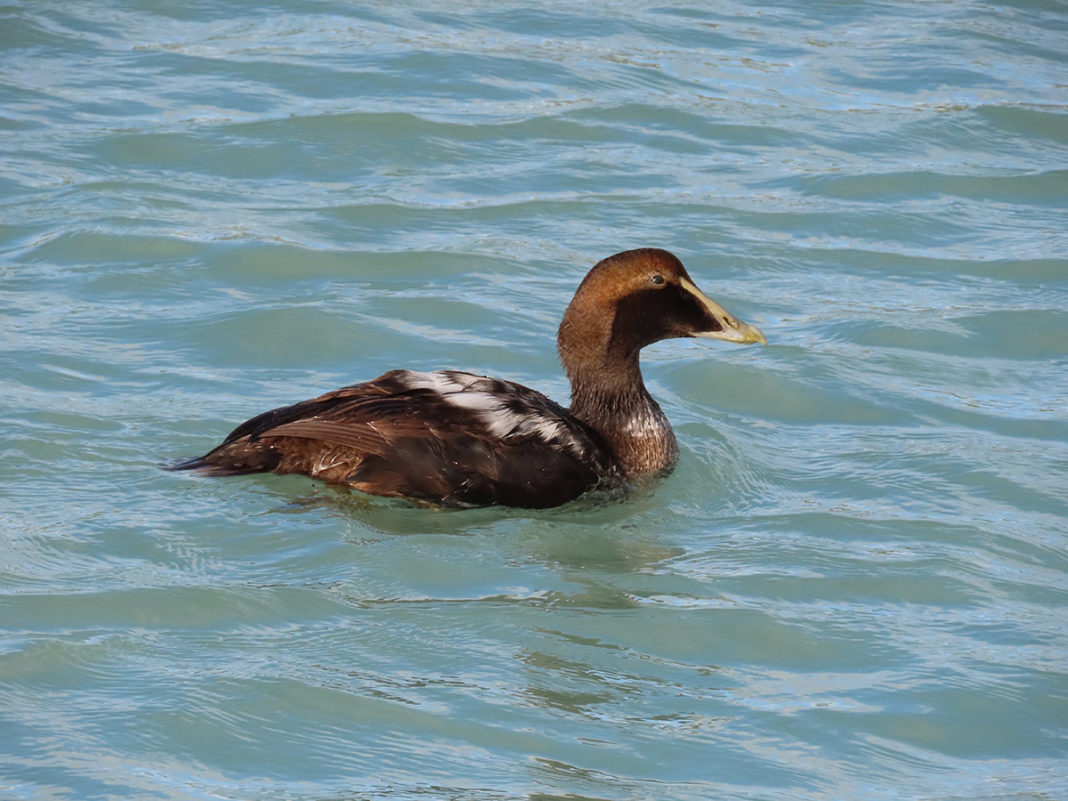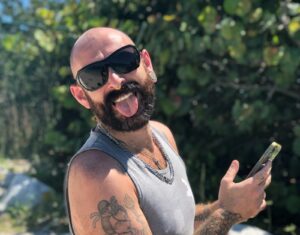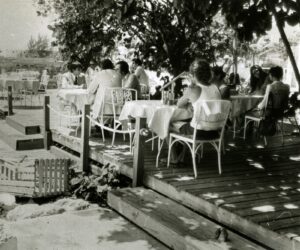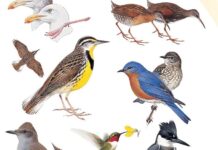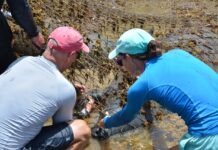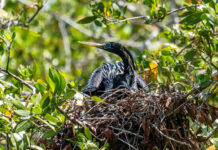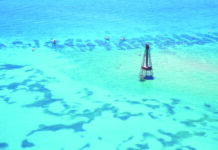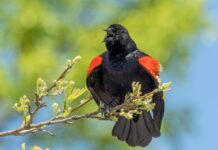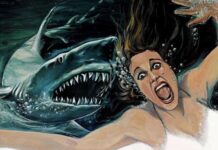I hate chasing birds. And I hate getting up early. And, closing out my third decade living in the Keys, I don’t much like the cold. So it took some doing to get myself out the door the other morning, the coldest day of the year.
But I was vexed — vexed by a duck. Specifically a sea duck called a common eider, the kind of bird you’re not supposed to see in these parts.
It’s not that I hate looking at birds – I’m a semi-professional birdwatcher, it’s kind of what I do. But in overly simplified terms I like to head out with a pair of binoculars to see what I can see. Chasing, in birding terms, is heading out to find an individual bird, usually a rarity. And as much as I love seeing rarities, I hate defining my day as a success or failure depending on whether or not I saw a specific bird.
But this eider had gotten into my brain. I couldn’t let it go.
Eiders are cold-water birds. They spend the summers up in the Arctic, breeding and feeding around rocky islands. They need open water to survive, and usually winter in large groups just far enough south to avoid frozen oceans.
But apparently one will, on occasion, get a wild urge and set out for shorelines incognita. Sightings dot the eastern seaboard, occurring less frequently the farther you get from Canada.
In 2018, I saw one as I was heading into the marina on Stock Island. It was sitting on a mudflat in the last light of day, and I almost passed it by. I turned the boat around, took a few dozen pictures, and triple-checked the Sibley’s field guide because it was so out of place.
Most ducks’ bills, let’s face it, are pretty goofy looking. Eiders, though, have these broad, sturdy, aquiline bills – Romanesque, really – that lend them a kind of dignity. And they’re big, as far as ducks go, the biggest duck in the Northern Hemisphere, almost half the size of a pelican.
After I saw the eider I motored into the marina with the warm glow of having found a rare bird without chasing it.
A common eider had been seen at the Dry Tortugas in 1967, so I figured I had the second-southernmost sighting of a Common Eider on record, which was nice. But then someone pointed out to me that the Dry Tortugas are actually north of Key West and Stock Island by 4.33 miles. So it turned out I indeed had the southernmost sighting of a common eider on record and all the glory that entailed. (I’ll never forget the accompanying ticker tape parade, the flyover by the Blue Angels or the ceremony and laudatory speeches that followed.)
A few weeks back, I got a message and a couple of iPhone photos from Amanda Powell, who asked, “Do you think this is an immature eider?” She’d seen it while jogging at Truman Waterfront. Amanda is a biologist who occasionally works with the Avian Research and Conservation Institute. She knows her stuff. And yes, yes it was an eider, and was in fact the new southernmost record for a common eider.
The glory was all hers now.
I thought, huh, I should go see that bird, but then got caught up in the vortex that is the holiday season, even during a global pandemic.
A few days before Christmas I got a message from Janet Snell, a friend from my days as host of the pub quiz at Mary Ellen’s. Did I know there was a common eider down by the Danger Charters docks? Then, a few days later, another message from Janet asking if I knew there’s a common eider down by the Danger Charters docks right now?
I dropped everything, grabbed my binoculars and camera, and started imagining the really nice photo I would get of this bird. Then I spent three hours walking the shoreline between the Danger docks and the Galleon, not seeing a common eider.
The day after Christmas a birder named Kevin Christman posted that he’d gone looking for the bird a few times down at the same docks, but then on a hunch, he had gone over to Higgs Beach and saw it there, swimming just off (Former Vice President Cheney’s first name) Dock.
Which is why I got up early and braved the cold the next day.
The bird was not at Higgs when I arrived, so I worked around the edge of the island on my bike, scanning, making my way to the water’s edge whenever possible, searching all the way down to the ferry terminal.
It was one of those magical Key West mornings, when you keep running into people you know — Daniel from the Roost, Ashley and Arlo from the Literary Seminar, Richard from Blue Heaven, Thomas Sweets from Key West Wildlife Rescue, out with a giant net, trying to find an injured pelican someone had reported.
Or it would have been one of those magical mornings if I wasn’t dogged by that feeling of abject failure that comes with not finding the bird I was chasing. I went chasing the next two mornings after that. And then another morning later on. And I will probably go again, even though no one has seen the thing in weeks.
There’s nothing worse than being vexed by a duck.




